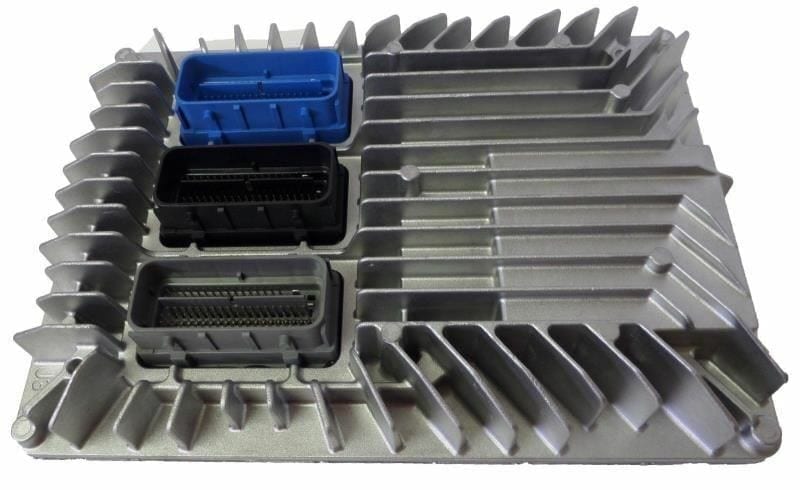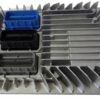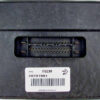Restore Peak Performance and Reliability to Your Vehicle
Is your 2012 Captiva Sport or other GM vehicle suffering from frustrating, hard-to-diagnose issues? An intermittent no-start, a persistent Check Engine Light, or erratic engine behavior can often be traced back to a failing Engine Control Module (ECM). As the central computer of your vehicle, the ECM is responsible for managing everything from fuel mixture and ignition timing to transmission shifting. When it falters, the symptoms can be confusing and widespread. This replacement ECM is the definitive solution, arriving pre-programmed with the latest GM software specifically for your vehicle’s VIN.
A Technician’s Notebook: The Captiva That Wouldn’t Communicate
I once had a 2012 Captiva Sport in my bay that was a real head-scratcher. The owner reported it would randomly stall at red lights and sometimes refuse to start for hours. The Check Engine Light was on, but my high-end scan tool couldn’t establish communication with the ECM—a classic sign of an internal module failure. We checked all the power and ground circuits to the module, and they were perfect. The problem was inside the box. After installing one of these VIN-programmed modules, the vehicle started instantly, all communication was restored, and the owner called me a week later to say it had never run better. This is why a quality, correctly programmed part is non-negotiable.
Is Your Vehicle Showing These Symptoms?
- ✔ Check Engine Light is illuminated with communication-related or internal processor fault codes (e.g., P0601, P0606, U0100).
- ✔ The engine cranks but refuses to start, or starts and stalls immediately.
- ✔ Noticeable decrease in fuel economy and overall engine performance.
- ✔ Inconsistent or harsh automatic transmission shifting.
- ✔ The vehicle fails an emissions test due to module-related errors.
- ✔ Seemingly unrelated warning lights (ABS, Traction Control) appearing on the dash.
The Advantage of VIN-Specific Programming
Replacing an ECM isn’t just a matter of swapping hardware. Modern vehicles require the module to be programmed with software that matches the specific options and systems of that exact car, identified by its Vehicle Identification Number (VIN). We handle this critical step for you. By providing your VIN during checkout, you receive a 2012 Captiva Sport Engine Control Module that is truly plug-and-play. We flash it with the newest, most stable software direct from GM, which often resolves issues that were present even in the original factory programming. This saves you a costly trip to the dealership and eliminates the need for expensive, specialized scan tools.
A Straightforward Guide to Installation
- ✔ Safety First: Always disconnect the negative terminal from your vehicle’s battery and wait at least 15 minutes to allow all systems to power down completely.
- ✔ Locate the ECM: On the 2012 Captiva Sport, the ECM is typically found in the left-hand (driver’s side) of the engine compartment. Consult a service manual if you are unsure of the location on your specific model.
- ✔ Disconnect Connectors: Carefully release the locking tabs on the electrical harness connectors and pull them straight out from the module. Never force them. Inspect the connectors for any signs of corrosion or damage.
- ✔ Remove the Old Module: Unbolt the old ECM from its mounting bracket. Keep the mounting hardware, as you will need it to install the new unit.
- ✔ Install the New Module: Secure your new, pre-programmed ECM onto the mounting bracket. Reconnect the electrical harnesses, ensuring they click securely into place.
- ✔ Final Steps: Reconnect the negative battery terminal. The vehicle may require a security relearn procedure, which typically involves cycling the key or leaving it in the ‘ON’ position for 10-15 minutes. This allows the new ECM to sync with your vehicle’s anti-theft system. Start the engine and verify that the Check Engine Light is off and the vehicle is operating correctly.
Will This Fit My Vehicle?
This ECM is a direct replacement for part number 12650256 and is compatible with a wide range of GM vehicles. Please verify your original part number or match your vehicle from the list below. This module is guaranteed to fit the following makes and models with the specified options:
- Buick Allure: 2010 (2.4L, 3.0L)
- Buick LaCrosse: 2010-2011 (2.4L, 3.0L)
- Buick Regal: 2011
- Cadillac CTS: 2010-2012 (3.0L, 3.6L)
- Cadillac SRX: 2010-2011 (3.0L)
- Chevrolet Camaro: 2012 (3.6L)
- Chevrolet Captiva Sport: 2012
- Chevrolet Equinox: 2010-2011
- Chevrolet Impala: 2012
- Chevrolet Orlando: 2012-2013
- GMC Terrain: 2010-2011
- Saab 9-5: 2010-2011 (2.0L)
Note: This module interchanges with part numbers 12616889, 12630908, 12637106, 12642665, and 12651993.
Frequently Asked Questions
Do I need to do any programming myself?
No. We handle all the programming for you before shipment. Simply provide your vehicle’s 17-digit VIN when you order, and the module will arrive ready for installation with the latest GM software.
Where do I provide my VIN?
After you complete your purchase, you will receive instructions on how to send us your VIN. We cannot ship your part until we receive this information to ensure correct programming.
What is a security relearn and is it difficult?
A security relearn syncs the new ECM with your vehicle’s anti-theft system. For most GM vehicles, it’s a simple procedure that involves turning the key to the ‘ON’ position for about 10-15 minutes. No special tools are required, and we can provide general instructions upon request.
Is this a used part?
This is a high-quality, tested, and verified component that has been professionally prepared for resale. Each module is inspected and then loaded with vehicle-specific software, ensuring it performs to OEM standards.
Will this fix my transmission problems?
In many cases, yes. The ECM plays a crucial role in controlling the transmission’s shift points and behavior. If your transmission issues are caused by faulty signals from a failing ECM, this replacement part will resolve them. However, it will not fix internal mechanical failures within the transmission itself.



